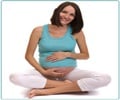Australia, for long dogged by low population growth, is witnessing an upsurge, in the wake of baby bonus announced in 2004. But it comes with a rider. Teen pregnancies are also on the rise.
Australia, for long dogged by low population growth, is witnessing an upsurge, in the wake of baby bonus announced in 2004. But it comes with a rider. Teen pregnancies are also on the rise.
The bonus, originally only $3000, is now worth $5000 and is income-tested, with the payout limited to families who earn $75,000 or less in the six months after a baby's birth.Mr Costello famously urged Australians to have "one for the country" to boost the baby slump, and the data, by University of Sydney researchers at Sydney's Royal North Shore Hospital, indicates his call was heeded.
The number of births jumped from up to 260,000 babies a year in the mid-1990s to 272,000 in 2005.
It rose again in 2006, hitting 282,000 births taking in both babies naturally conceived and through in-vitro fertilisation (IVF).
"Whether it has encouraged couples to increase their family size or just change the timing of a birth is yet to be seen," they write in the Medical Journal of Australia (MJA).
"But the results of this social experiment suggest that financial incentives do affect birth rates."
Advertisement
There were only about 40 additional teenage mums a year after 2004, from 1997 to 2004 teenage births had been declining on average by 125 births a year.
Advertisement
"And (it) follows a steep decline in teenage birth rates in the years before 2004."
Women who showed a "significant increase in first births" after the baby bonus were teenagers of average socio-economic status, but also those in rural areas in their teens or early 20s, and "average or advantaged" women aged 30-44 who lived in city areas.
For women who already had one child but then had another, the increase "occurred predominantly among younger women of low and average socio-economic status", the authors write.
The increase in third or subsequent births occurred across all ages.
Contrary to popular criticism of the baby bonus scheme, the authors "did not find ... the increase in births only occurred in low socio-economic or disadvantaged groups".
The overall rise in births in Australia takes in both naturally conceived children and those born as a result of IVF.
A second study also published in the MJA said it was IVF babies who represented better value, in terms of the cost to taxpayers of boosting the birth rate.
On combined 2005-2006 figures, the baby bonus cost government $1.7 billion and it resulted in 37,000 extra babies.
It means the total cost of every additional baby was $45,000.
"Medicare rebates for IVF births in the same period were $295,000, which works out at less than $20,000 for each baby," said Professor Robert Jansen, a director of Sydney IVF, AAP reported.
Source-Medindia
GPL/S











